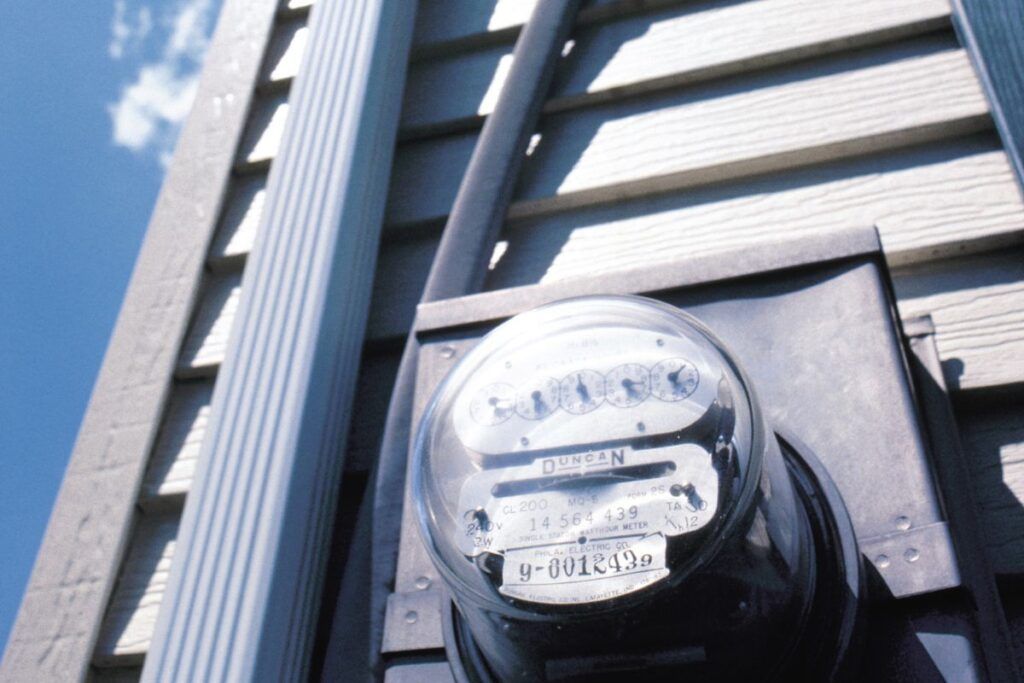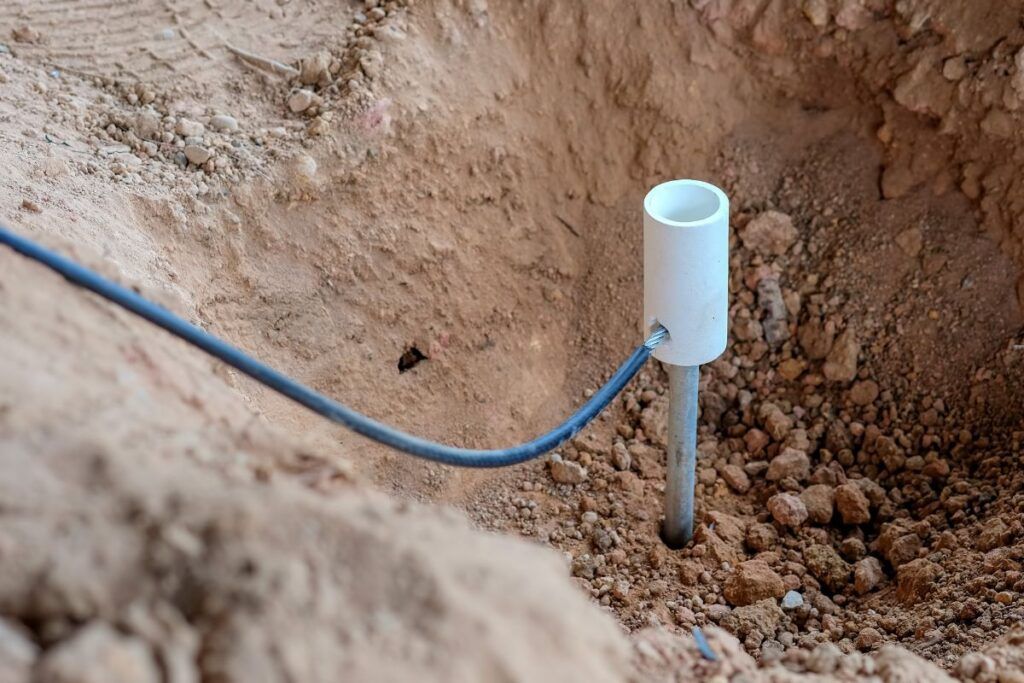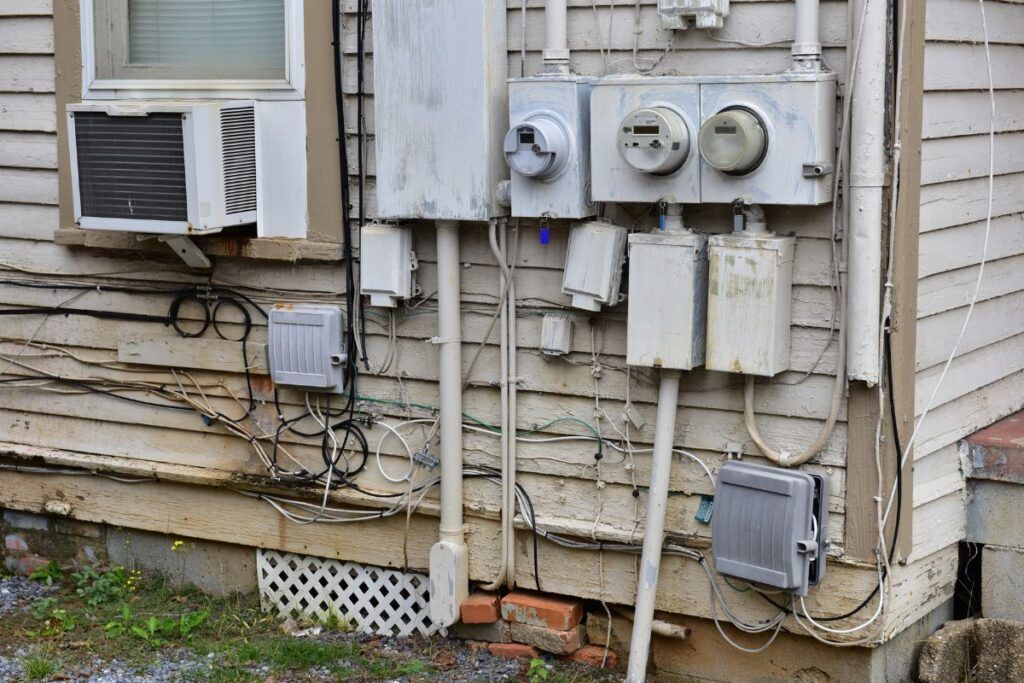A breaker box is an electrical device that saves you from several electrical issues and damages. It interrupts the high voltages and protects you from short circuits. But, have you ever wondered what wires are used from the meter to the breaker box? That is what I will share today.
Generally, three types of wires are connected from the meter to the breaker box – live, neutral, and ground. Using #6-8 AWG copper wire is recommended for wiring the meter with the breaker box. But, you may also use aluminum or copper-clad if you can’t afford copper.
It isn’t very clear to understand the wire types and their features. This guide will help you understand the wires running from the meter to the breaker box. We will also share the steps to run the wire from the meter to the breaker.

Check out our list of top-handpicked products for all your electrical, appliance, and HVAC system needs to keep your home running smoothly.
This post includes some affiliate links.What kind of wires run from the meter to the breaker box?
While setting up a breaker box, you will see that multiple wires run the meter to your breaker box.
The wires that run from the meter to the breaker box are called feeders.
These are the main supply wires that bring electricity from the utility company and carry it to your home.
The wires run from the meter outside your home and inside your house’s main electrical panel.
Now, you want to know what wires run from the meter to the breaker box.
Below is a short description of the wire kinds.
Hotwire
Hotwire or live wire is the initial power feed.
It carries electricity from the main power source to the outlet.
Since it is the first one to carry the current, live wire always carries the current.
So, touching it barely will give you a severe current shock, especially when an active power source is feeding it.
Hot wires are black wires.
It is the common color found in most houses.
However, other colors are yellow, red, or blue. But black is the common one.
The other colors can sometimes mean different wires with different functions and powering the outlet.
Neutral wire
Once the hot wire carries power from the main source, it needs a return path to complete the circuit.
It is where the neutral wire plays its role.
The neutral wire carries the circuit from the outlet and puts it into the main power source.
Usually, it brings the circuit to the ground or bus bar at the electrical panel.
This whole thing helps in good circulation of the current for which the electricity gets fully utilized.
The neutral wire also prevents unnecessary use of currents and wire faults.
To identify the neutral wires, look for the white wires.
Though these wires may not circulate the current all the time, you should still not touch them bare.
Since they carry currents, you must handle them like live wires.
Ground wire

Since the live and neutral wires help make the circuit, the only thing left is safety.
That is why ground wires are attached to your breaker box.
The ground wire doesn’t hold any current.
When any short circuit occurs, the current takes an alternate path and flows through the ground wire to save you from electrical shocks.
Ground wires are connected mostly with several appliances, so you don’t receive any shock while handling that equipment.
Ground wires are usually green wires.
Though the wire is used for our safety, most houses don’t have it, especially the older houses.
The ground wire was introduced much later.
To understand whether your house has ground wire or not, you can check the outlets.
If they are 3-prongs, then you have a ground wire. Otherwise, you don’t have the wire.
SEU wires
SEU wires are the service entrance cables.
They are used as panel feeders in the branch circuit application.
Most service entrance applications use SEU wires and connect the meter to the breaker box.
It is used to join the overhead service cable with the service panel.
The wires are also used for giving connections to extreme power supplies.
Wire material – Copper wires

In the case of wire material, most wires connected from the meter to the breaker box are copper wires.
Copper wires are the best and most famous kinds of wires for electrical purposes.
Copper wires have lots of benefits:
- Copper has very high conductivity. They can handle loads of currents compared to aluminum.
- Copper is highly heat and corrosion-resistant. Despite carrying enough electricity loads, the wires won’t get heated up.
- Copper has Patina, a green tarnish, which gets oxidized. It further makes the wires resistant to corrosion.
- Copper is flexible and malleable and, thus, can be used for longer distances.
- Since the wire has high conductivity, you can use smaller gauges of copper for longer distances without any problem.
- Copper wires don’t contract or expand, so the electricity flow doesn’t get interrupted, unlike aluminum.
The wire size used in the breaker boxes depends on what amperage of electrical service you are using.
Can I use aluminum wire to run from the meter to the breaker box?
You can use aluminum wire from the meter to the breaker box.
The NEC (National Electric Code) approved the wire for electrical purposes.
But, people still stick to copper due to so many advantages.
Aluminum is not a bad option, but copper is better than aluminum.
Aluminum wires cannot hold a huge load of electricity.
Besides, they are not heat or corrosion-resistant.
That is why you will require higher gauges, nearly double the size of copper.
The aluminum wires get contracted and expanded easily.
But, despite such drawbacks, some people use aluminum because they are much cheaper than copper.
The wires are lightweight, and thus installing them is easy and quick.
If you want a better aluminum version, you can use copper-clad aluminum.
Since these wires have some copper fittings at the end, you can benefit a little from copper.
Copper-clad is cheaper than copper but more expensive than aluminum.
How do you run a wire from the meter to the breaker box?
Before beginning to connect the wire from the meter to the breaker box, you must know what materials are required for it and what their uses are in this process.
Materials required:
- Screwdrivers: It will help remove the faceplate and close the cover of the breaker box without any loose screws.
- Rubber mallet: Use a rubber mallet with rubber tips to prevent electrical shocks. Hammer with a metal end can result in shock as metal is a good conductor of electricity.
- Wire cable: It gives you a clean workplace where you can keep all the wires in one place. Keeping all the wires in one place allows you to see things, think and work better, and gives a safe working surface.
- Electrical wire: You will require electrical wires, like the live, neutral, and ground, to be connected from the meter to your breaker box. The best size of wire is #4 AWG copper wire.
- Voltmeter: This device is used to test the voltage rate of the wires.
- Breaker box: You can buy it from any hardware or electrical store. Make sure you are using a good brand that has passed the electrical test in your country.
How to run a wire from the meter to the breaker box?

Here is a step-by-step guide to running a wire from the meter to the breaker box.
1. Prepare and keep aside all the materials required for running a wire from the meter to the breaker box.
Whatever products you have assembled to run the wire should be in good condition.
While buying, always choose the good quality, even if it is a little expensive for you.
Good quality materials will last longer. Otherwise, you will have to buy them repeatedly, and you might face electrical hazards.
Also, check that you know the usage of every tool you have gathered. Otherwise, consult a professional.
2. Find your main switch and switch it off while you start working.
Since it gives electricity to your whole house, turning it off will save you from electrical damage, short circuits, and shocks.
To do this, open the cover of the main switch and switch off some pairs of switches.
3. Connect the wires to the voltmeter to confirm that the main is off.
The device has two probes.
Connect the ground bar with one probe and one screw of the breaker box with another.
If you do not find any voltages, you have successfully turned the main off, and you can go on with connecting the wires from the meter to your breaker.
4. Please find the ground wire from your meter and join it with the ground bar of your breaker box.
Ensure the breaker box has ground support to connect the ground wire.
This wire will prevent short circuits, electrical shocks, and hazards.
For connecting, open the ground bus of the breaker and the meter, and strip the ground wire ends.
Screw back the ground wires in their buses.
If your wiring doesn’t ground support, make one using a rubber mallet.
5. Now, connect the neutral wire.
Though the neutral wire is not required, adding one can save you from electrical faults, improve the circuit’s efficiency, and prevent excessive current flow.
Though the wire is safe, it should be handled with care like the live wires because they carry electricity.
Connect the neutral wires from the meter to the breaker box in the same method as the ground wires.
Connect the neutral from the meter to the neutral in the breaker box.
6. Now, connect the hot wires from the meter to the live bus in the breaker box.
Since these wires are the first ones to carry currents, live wires will always have currents. Thus, handle them with care.
If there are two hot wires, you must be careful while attaching them.
Unscrew the breaker hot wire terminals, insert the positive one and then connect the negative wire. Now, screw them with nuts and tighten them well.
Now, secure all the wires with wire tie cables.
It will ensure that all the wires remain in proper shape and place.
7. Now, time to secure the breaker box.
Screw the box over a strong and elevated surface.
Cover the breaker box and the meter with the faceplates very well with the nuts and bolts.
Precautions to take while connecting wire from the meter to the breaker box
Since these are works of electricity, you must take certain safety precautions while doing them.
Here are some:
- Do not connect different current phases.
- Never touch the live or neutral wires bare. They carry enough currents and can shock you. Always keep the main off while working.
- Before working, always keep the main switch off. Take the help of the voltmeter to confirm it.
- Never use a hammer to disconnect any wires, especially metal hammers. Hammering can damage the wire sheathing.
- Always use insulated tools while working with the live circuits to prevent shock from the wires or screwdrivers.
- Always wear gloves and goggles while dealing with electrical wires.
- Work with one wire at a time. No matter how highly experienced you are, don’t be a superhero and work with multiple wires together.
What should be the distance between the meter and the breaker box?

While placing the meter and the breaker box, you must know that there must be a good distance between the two.
The distance between the two boxes will determine and affect the amount of voltage drop and current capacity of all the wires.
So, always ensure that the distance between the meter and the breaker box remains 15 to 25 feet.
Experts recommend 15 feet or below.
Will the wire size matter?
The wire size to run from the meter to the breaker box is very important.
The wire size depends on the service panel or breaker box size.
The current capacity the wire can hold should be able to match the panel box.
It depends on the amperage of service you are using.
For example, if you have a 200 amp service, you will need 4 AWG copper wire.
If you use a 125 amp service, you need an 8 AWG copper wire.
What is the best type of wire for running from the meter to the breaker?
While working with such electrical wirings, you must use insulated wires. The best one is stranded copper or PVC cables.
These are much better than metallic cables.
Besides, PVCs are cheaper and have been tested by professionals in different fields.
You can also use them in different weather like rain or snowfall.
You can also use these cables for several DIY projects easily.
Final words
Three main wires go from the meter to the breaker box – live, neutral, and ground wires. Some SEU wires are also used to join the overhead service cable with the service panel.
The best type of wire is 4 AWG copper. But you can also use aluminum or copper-clad. Since they have less conductivity, you need to use a higher aluminum gauge, double the size of copper.
Maintain a distance of at least 15-25 feet between the meter and the breaker box. Always use insulated wires while dealing with electricity.
Follow every step to connecting wire from meter to breaker to let things at a perfect place.
Data Source: National Electrical Code
